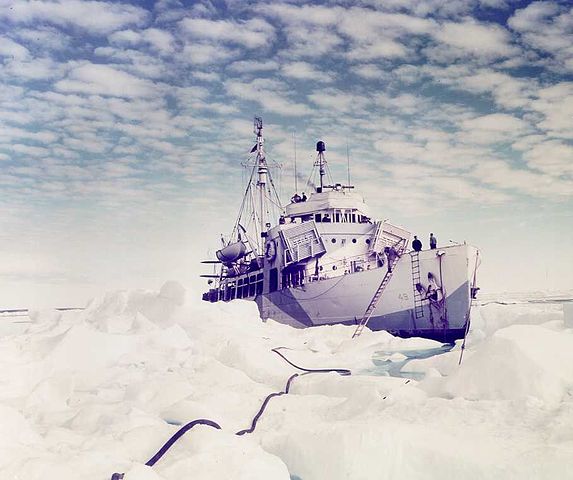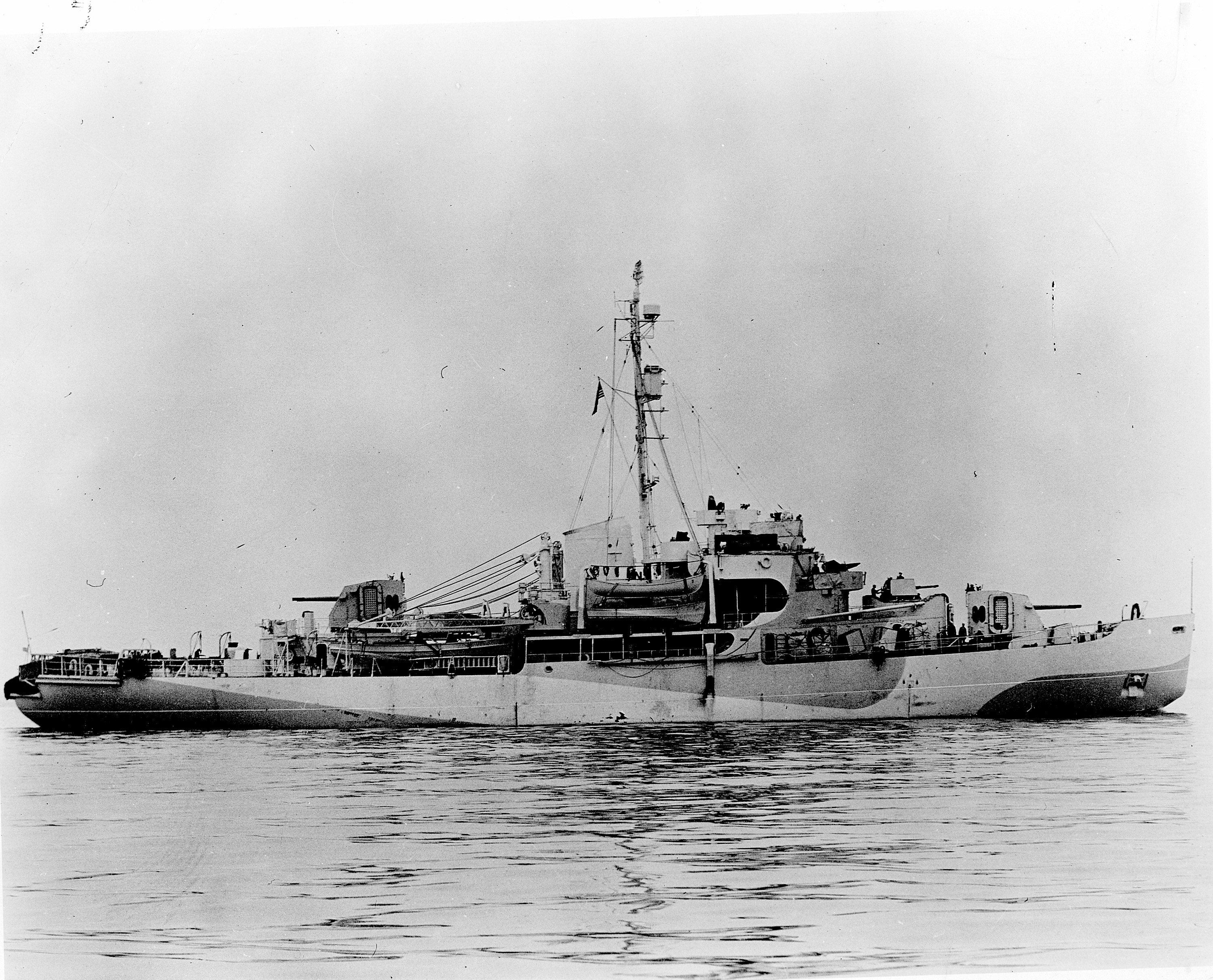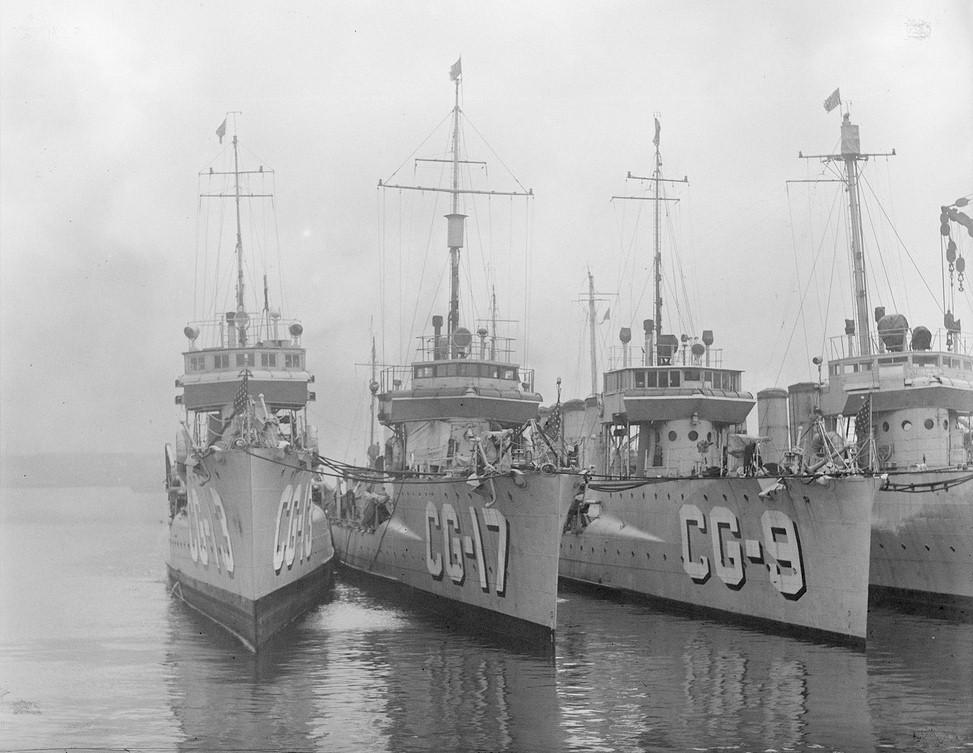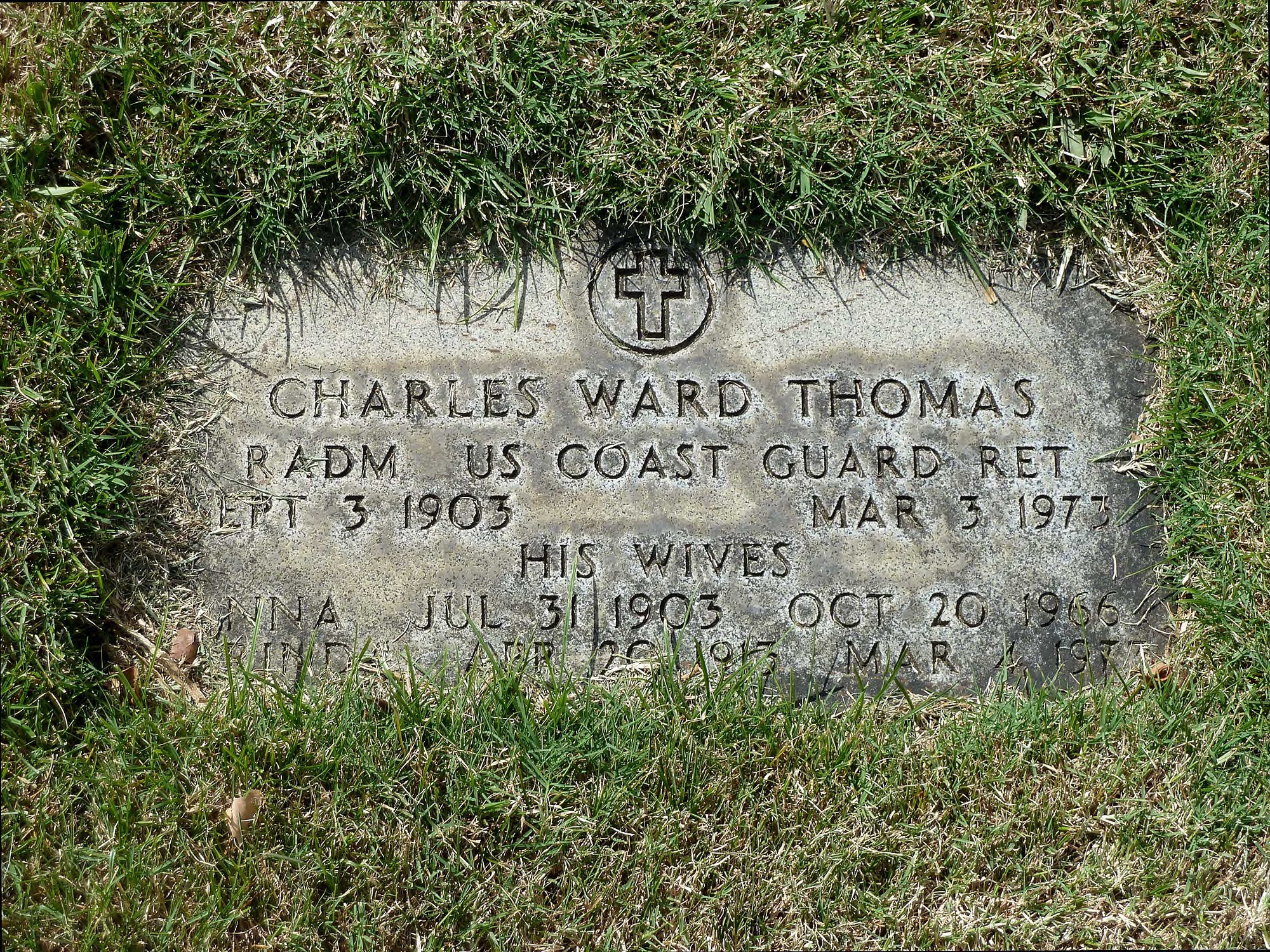Aug. 20, 2021 —
In July 1922, Charles Ward “Tommy” Thomas entered the U.S. Coast Guard Academy. He was born in 1903 in Pasadena, California, and graduated from Fairhaven High School in Bellingham, Washington. In October 1924, He graduated from the Academy was commissioned an ensign.
For the next 10 years, Thomas served aboard Navy destroyers re-purposed and manned by Coast Guardsmen to fight the rumrunners of Prohibition. His first assignment sent him to the Navy Yard in Philadelphia for reconditioning the Navy destroyer Paulding and duty as its watch officer when the warship was commissioned in Boston. He served briefly aboard the Cutter Seneca and then returned to duty aboard the Coast Guard destroyer Paulding. Next, he served aboard the re-purposed destroyer Cummings of the New London Division and the n aboard the Cutter Seminole out of New York. His next tour of duty saw him stationed in Florida before returning to the Coast Guard Destroyer Force as executive officer aboard the Coast Guard destroyers Ericsson and Semmes.
n aboard the Cutter Seminole out of New York. His next tour of duty saw him stationed in Florida before returning to the Coast Guard Destroyer Force as executive officer aboard the Coast Guard destroyers Ericsson and Semmes.
The next 10 years Thomas receives a variety of afloat and ashore assignments where he began a life-long pursuit of research and scientific study. In the 1930s, he published articles on the threats of water pollution, the first such publications by a Coast Guard officer. Later book and article publications would focus on icebreaking and shiphandling in icebound waters, but he also published research articles on Antarctic micro-fauna and the zoology of ocean bottom sediments. During his career, Thomas earned master’s degrees in Marine Geology from Washington University and Marine Biology from the University of Maryland. In addition, he was a qualified oceanographer completing undergraduate work in micrometeorology, crystallography and seismology.
In the summer of 1943, Thomas took command of the Cutter Northland of the Coast Guard’s Greenland Patrol. It was his first command of an ice cutter and it put his warship experience to good use. Under his command, Northland pursued Nazi military personnel manning a clandestine weather station on Sabine Island, captured one German and then navigated the pack ice of Northeast Greenland for months before finding open water. Under Thomas, Northland also established a vital radio direction finding station on the Norway’s Jan Mayen Island, located north of Iceland and 300 miles off Greenland’s eastern coast. This station could locate transmissions from any clandestine weather stations transmitting weather reports to the Nazi high command.
In January 1944, Thomas was a ssigned to outfit the Coast Guard’s heavily-armed heavy icebreaker Eastwind. After
ssigned to outfit the Coast Guard’s heavily-armed heavy icebreaker Eastwind. After  its commissioning, he commanded the Eastwind on the Greenland Patrol in the dramatic chase and capture of the armed German trawler Externsteine along with its crew and personnel of an enemy weather station on North Little Koldeway Island located in Northeast Greenland. Capt. Thomas served as task force commander for the vessels involved in the dramatic capture earning him the Legion of Merit Medal with Combat “V.”
its commissioning, he commanded the Eastwind on the Greenland Patrol in the dramatic chase and capture of the armed German trawler Externsteine along with its crew and personnel of an enemy weather station on North Little Koldeway Island located in Northeast Greenland. Capt. Thomas served as task force commander for the vessels involved in the dramatic capture earning him the Legion of Merit Medal with Combat “V.”
By early 1945, Thomas re-joined the Greenland Patrol and became its commander in August of that year. Detached from that post in November 1946, Thomas next commanded the Coast Guard icebreaker Northwind in Operation “High Jump,” the fourth of Adm. Richard Byrd’s expeditions to the Antarctic and the subject of the Academy Award winning motion picture, “The Secret Land.” Under Thomas, the Northwind spearheaded the expedition, clearing the way through the Ross Sea ice pack for Navy cargo ships. In 1948, in the North Pacific, Thomas commanded Northwind in re-establishing the annual Bering Sea Patrol, which had been discontinued during the war. During this command, he compiled extensive oceanographic reports for the waters of the Bering Sea and Arctic Ocean.
During the early 1950s, Thomas’s service s were requisitioned by the Chief of Naval Operations to plan U.S. naval support for the U.S. National Committee of the International Geophysical Year, in the Antarctic. In early 1955, he reported for duty as chief of staff, Antarctic Planning Gro
s were requisitioned by the Chief of Naval Operations to plan U.S. naval support for the U.S. National Committee of the International Geophysical Year, in the Antarctic. In early 1955, he reported for duty as chief of staff, Antarctic Planning Gro up. In July, after the planning group became Task Force 43, Thomas was designated chief of staff and aide to the commander, Task Force 43. As the task unit commander for the Antarctic operation, “Deep Freeze, Thomas was responsible for the delivery of cargo for construction of the famed U.S. base Little America, which he accomplished in spite of severe ice conditions. Later, he explored the East Coast of Victoria Land and identified the site for a scientific base at Cape Hallett.
up. In July, after the planning group became Task Force 43, Thomas was designated chief of staff and aide to the commander, Task Force 43. As the task unit commander for the Antarctic operation, “Deep Freeze, Thomas was responsible for the delivery of cargo for construction of the famed U.S. base Little America, which he accomplished in spite of severe ice conditions. Later, he explored the East Coast of Victoria Land and identified the site for a scientific base at Cape Hallett.
The next year, Thomas returned to the Antarctic as task group commander for Operation “Deep Freeze II.” Under his command, the Northwind and the Navy assault cargo ship Arneb penetrated heavy sea ice to erect the scientific base at Cape Hallett, which he had previously discovered. Later, he identified a site for the Wilkes Scientific Base on the Clark Peninsula and assisted in its installation. While there, he explored a group of uncharted islands northeast of Clark Peninsula and prepared a geographic report for that area.
On Nov. 1, 1957, Thomas retired from the Coast Guard as a rear admiral to direct Arctic operations for the U.S. National Committee of the International Geophysical Year. A year later, he was a ppointed by the University of Washington’s Board of Regents to direct the university’s study of the Arctic Basin and the sea ice contained in it.
ppointed by the University of Washington’s Board of Regents to direct the university’s study of the Arctic Basin and the sea ice contained in it.
Charles “Tommy” Thomas passed away in 1973 at the age of 69. During his military career, he received the Legion of Merit, Commendation Pendant with Bronze Star, American Defense Medal (with Fleet Clasp), American Area Medal, European-African-Middle Eastern Area Medal (with two stars), World War II Victory Medal and Korean Service Medal. He was also honored as a fellow of the Arctic Institute of North America for distinguished scientific service in the Arctic. Rear Admiral Thomas was interred with full military honors at Hawaii’s National Memorial Cemetery of the Pacific in Honolulu.